You already know just how important customer experience (CX) can be. After all, around 80% of people point to CX as being a deciding factor in what brand to choose. How people view your CX can be affected by a number of factors. These can include customer service, product quality, price points, and even how easy it is to navigate your website and how simple the checkout process is.
Knowing what you are doing well is important but even more important is recognizing where things have gone wrong and where customers are experiencing problems. These problems are usually known as customer pain points. What are customer pain points and how can your organization identify those pain points and take steps to rectify any issues customers have encountered?
What are customer pain points?
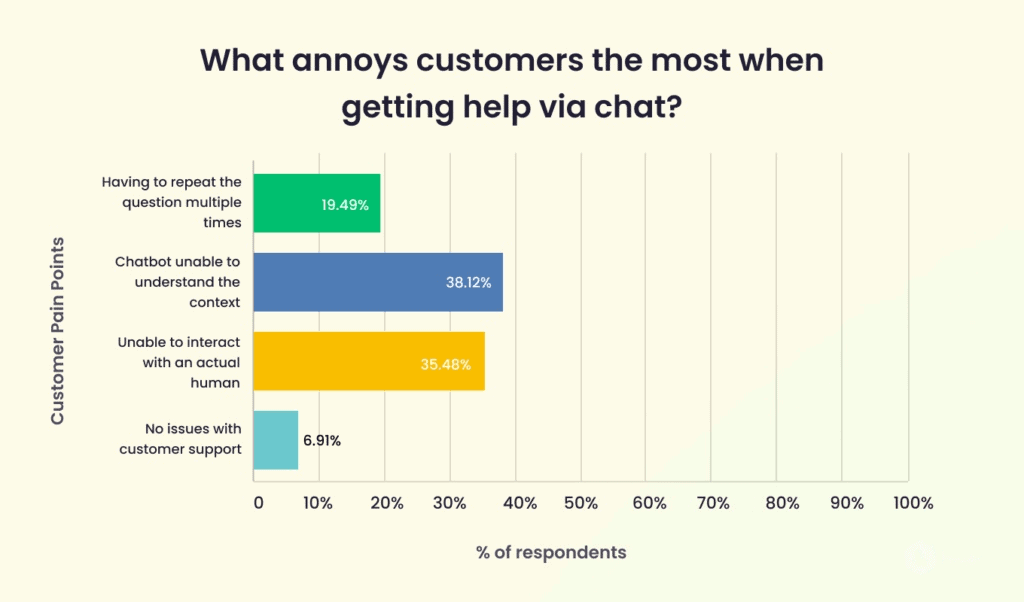
Image sourced from HiverHQ
Pain points are issues that customers can experience when interacting with your business, usually on your website. They may be existing customers or they may be potential customers. If the latter, experiencing pain points may put them off your business and they may seek the products and services they want elsewhere.
Depending on the severity of the pain point and whether the customer can overcome it or not, a poor experience can lead to anything from a negative decision to leaving critical comments or reviews on social media or other platforms.
A good customer experience is crucial to every business. It is something that not only boosts the public perception of your organization but is also a crucial step in the customer retention journey.
Depending on the type of business you have, there are several types of pain points a customer may encounter. Knowing the ones that might affect your business can make it easier for you to identify them and rectify them as quickly as possible.

Free to use image sourced from Unsplash
- Support pain points: Customer support and service is an essential part of the customer experience. This can cover everything from poor technical support to the lack of availability of agents who can ask pre-purchase or after-sales queries.
- Product pain points: These can come from poor inventory management or using outdated tools. If a customer sees a product as available on your website and then proceeds to make a purchase only to find out the product is sold out, then they won’t be happy.
- Process pain points: Issues with your processes can encompass everything from a website that is hard to navigate and find desired products to a checkout process that is either overly complicated or restrictive when it comes to payment options.
- Finance pain points: These can again include different factors but usually refer to some part of your pricing policy. Customers may view your products as being overpriced compared to competitors or you may have hidden fees (such as shipping) that only appear at checkout.
How do you identify pain points?
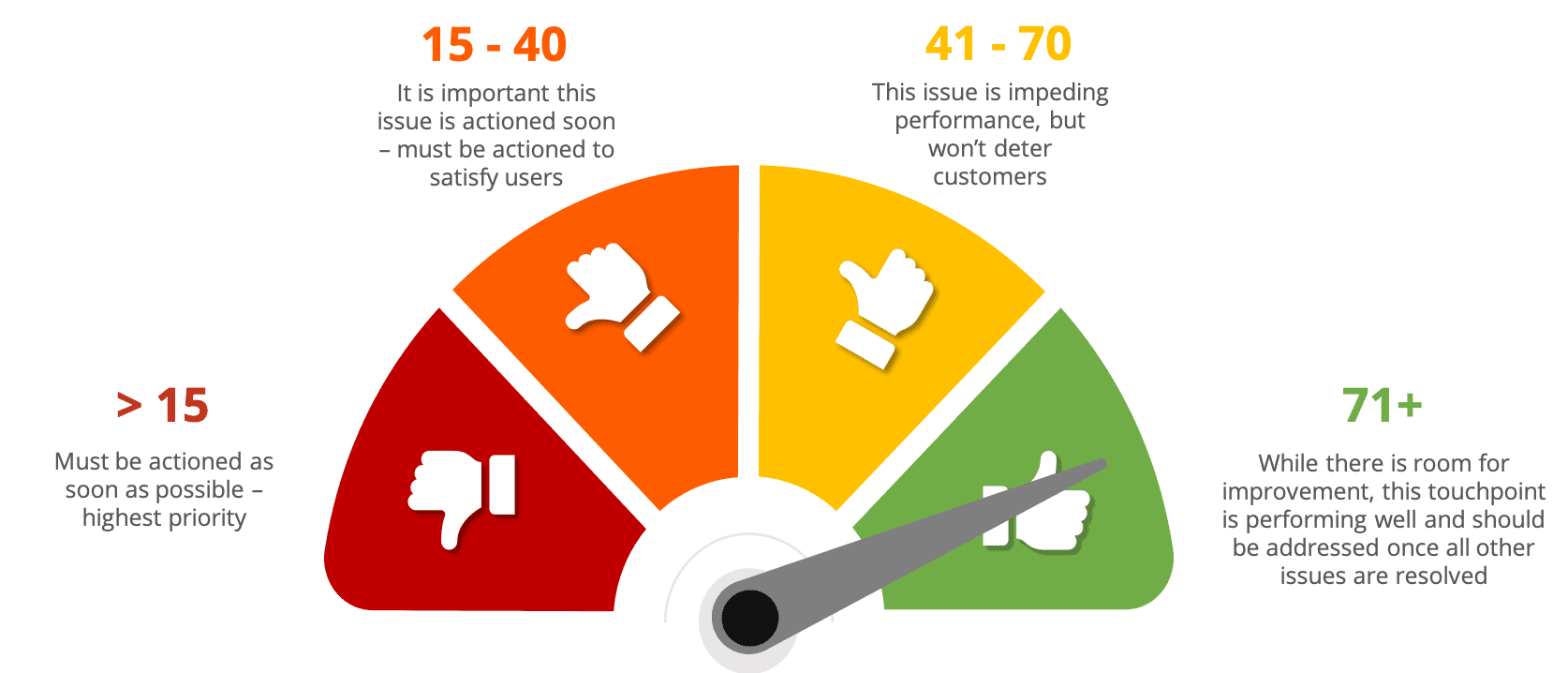
Image sourced from Findologic
To know what pain points your business is experiencing, you need to have conversations with the customers who have encountered them. But where are these conversations going to take place?
Many customers will look to the contact section of your website and choose the option that is most convenient to them. That option could be email, phone contact, or even live chat if that is on your site.
However, the one disadvantage of these options is that these conversations are private. Of course, privacy can be crucial when it comes to things like data protection and SOC 2 compliance requirements, but how important is it when solving pain points?
This is where social media can offer a unique advantage when compared to other engagement options. Not only do you have the opportunity to identify and address any pain points that one customer is experiencing, but also an opportunity for other social media users to witness you being proactive.
For example, a customer has purchased secure remote access solutions from you but is experiencing some technical issues. They have been unable to contact tech support due to call volume so take to one of your social media pages to voice their frustration.
A member of your social media team can see their post and can flag it for urgent attention. They can also reply to the customer’s post and advise they will receive a call from a tech support agent as soon as one is available.
Of course, many businesses now have multiple social media accounts and you need to have an effective strategy for monitoring and managing those accounts. It’s important that there are fast response times to both posts and messages.
In this example, not only have you identified and addressed this customer’s particular pain point, but you have been seen by others on that social media platform to be positively proactive in addressing an issue. Those observers may be potential customers who may be influenced by your actions.
Being proactive is one of the keys to identifying and addressing pain points. But the example above was initiated by the customer. How do you as an organization be proactive in asking customers if they are experiencing pain points and, if so, what they are?
Surveys
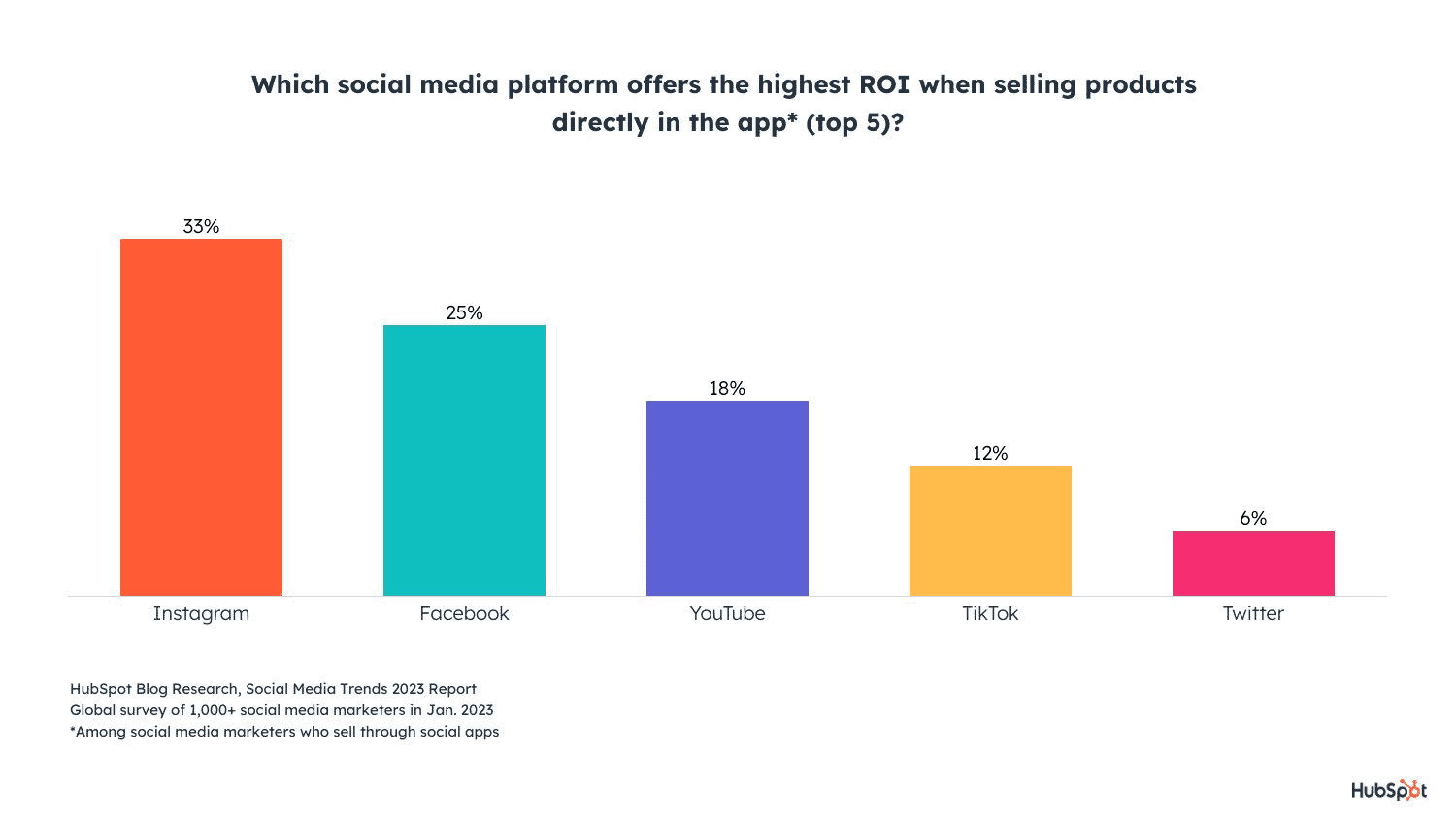
Image sourced from Sprout Social
Surveys have always been a good way of both gauging customer satisfaction and identifying pain points. You can use surveys in a number of useful ways. Sending a survey by email immediately after a purchase not only evaluates satisfaction but also allows the customer to identify any issues they encountered.
However, those surveys only target customers who made a purchase. What about the ones that decided not to buy because they were faced with problems? To try and garner information from those people, you can either have surveys on your website or on your social media platform.
Social media messaging is one of the most important things that modern businesses need to get right. The various platforms may be customers’ preferred channels and they are more likely to see marketing and other content on those platforms than on your actual website.
It’s important to ask the right questions that provide actionable data. A generic question such as ‘How was your experience on our website today?’ may or may not collect the information you need to address any issue.
However, a more specific question such as ‘Did you encounter any problems when trying to find or buy a product?” is more likely to give you insights into the customer journey. While that may not be an open-ended question, you can then ask more supplemental questions.
If a customer answers ‘yes’ to that initial question, you can then ask them what area the problem occurred in with a multiple choice option as well as an opportunity to describe the pain point in more detail.
Being able to have a mixture of quantitative and qualitative data can give you insights into the entire customer journey and provide actionable answers that allow you to address the pain points identified.
Monitor social media
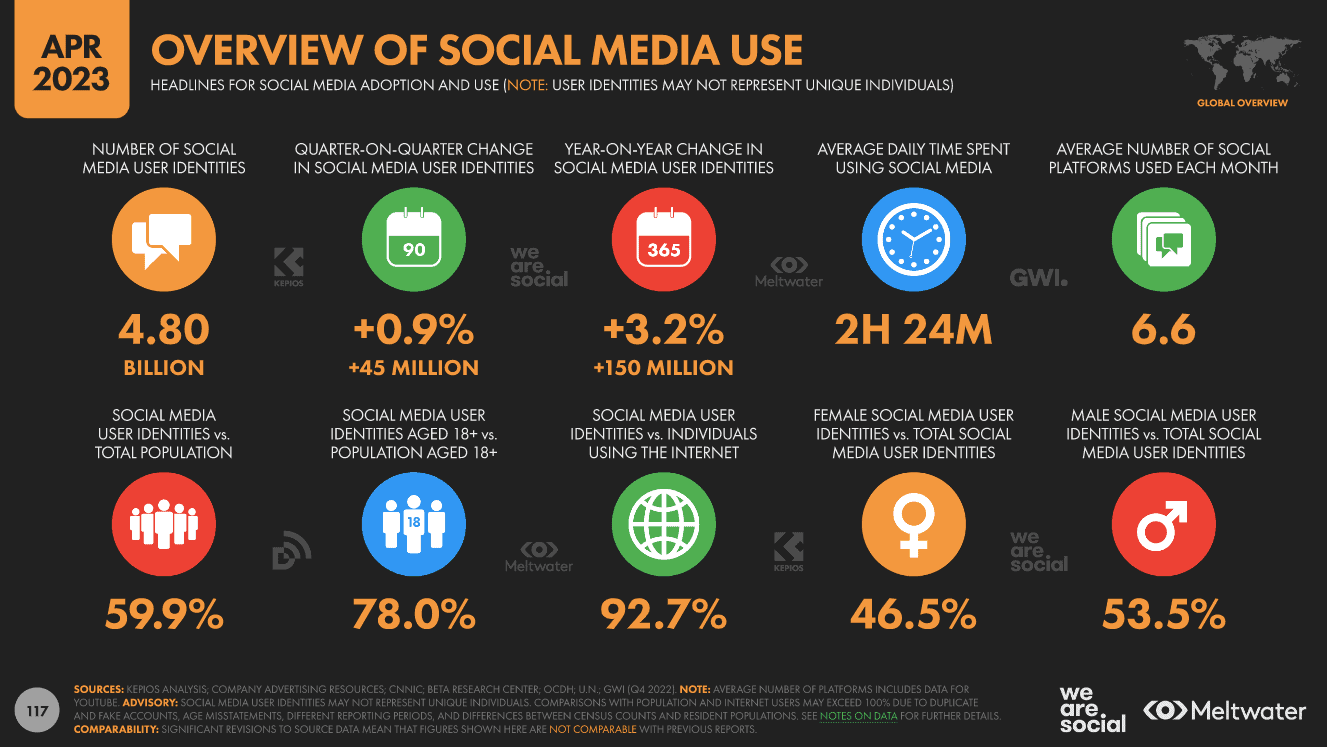
Image sourced from Smart Insights
People use social media to talk and they will often be quick to highlight both positive and negative aspects of their experience with your business. They will also use the many peer review sites to voice their satisfaction – or dissatisfaction – with your products and service.
Monitoring the various social media platforms and these review sites is a crucial factor when it comes to gauging and boosting overall customer satisfaction but also in identifying any pain points so that you can address the issues.
For example, when several people have discussed or highlighted on Facebook that they have experienced problems with your checkout process, then you know that this is an issue that needs further action and probably some action taken.
Utilize your sales teams
As well as lost sales on your website, pain points can lead to lost sales for your B2B teams. Rather than just putting that lost sale down to experience, you should be encouraging your sales team to be proactive (that magic word) again and to investigate why the sale was lost.
While this method may not necessarily ‘rescue’ a sale, it can help to identify problems that can be addressed and rectified so that sales are not lost in the future due to the same issue. By aligning your sales and support teams, you can help provide a better CX.
As with surveys, it’s important to ask the right questions and also to be as polite as possible. Just because you’ve lost the sale on this occasion, that customer may return to you in the future, especially if you’ve addressed the problems they previously experienced.
How should you address pain points?

Image sourced User Snap
So, you can see the advantages of communicating with customers via social media and identifying any pain points they have experienced. The next step is how to collect all the pertinent information and address those pain points.
Now, of course, all this sounds like an awful lot of work, but one of the big advantages of doing business today is the increasing use of technology and AI. Many organizations are now embracing the benefits of AI in customer service and you should too.
Have a feedback management system
Having a simple system that customers can use to lodge queries and complaints can be crucial to improving your CX and solving any pain points experienced. It keeps you connected with your customers and allows you to constantly look at ways of improving service and products.
Improve customer journeys
Good CX is all about optimizing the customer journey. The first step in achieving that is to identify major pain points and solve them. For instance, using tools like Miro’s customer journey map template can help in identifying and comprehending those major hurdles in the customer’s experience. Once you feel you have overcome the major hurdles, you can look at smaller bumps in their journey as well as offering greater personalization.
Use technology
As has been mentioned, there are various conduits you can use to collect customer feedback about pain points. If you have a call center (or even a contact team) then combining artificial intelligence and customer experience can be of great benefit to improving the overall CX.
Utilize an FAQ section
While some pain points may require action by your business, others can be caused by confusion or misunderstanding. If you find that this is a common occurrence, then you can provide solutions in an FAQ section on your website. You can also make ‘how to’ posts on your social media platforms.
Automation
There are only so many hours in a day and automating some – or all – of your internal processes can not only reduce costs and improve productivity, they may also help in overcoming pain points. For example, you could customize helpdesk software so that specific queries are routed to the right team.
Marketing and communications
We live in an omnichannel era, so you should ensure that the different channels you use all integrate as seamlessly as possible. A customer may prefer to communicate with you via social media about any issues before making a purchase on your website.
Social media platforms are no longer just an option. Social media represents a valuable investment in your business and can offer massive benefits when it comes to factors such as marketing and communication.
Similarly, with marketing, connect with the customers on their preferred channel. They may want to see special offers on their chosen social media platform rather than browsing your website. Posts with clear links to a product’s landing page may overcome pain points and increase conversion rates.
The takeaway
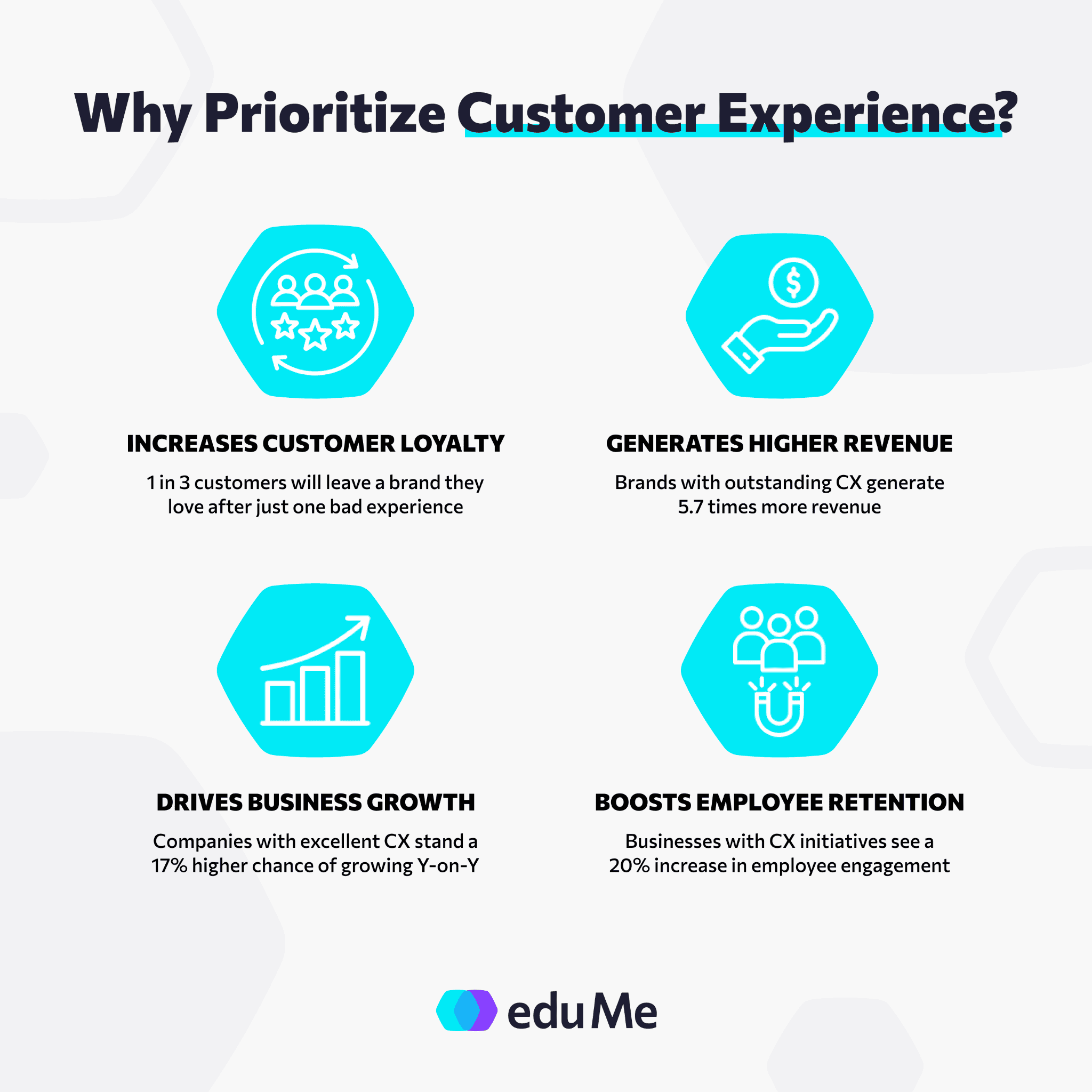
Image sourced from Edume
Good CX and customer satisfaction lie at the heart of any business’s success. When customers are unhappy with a business, they simply vote with their feet (or to be more accurate, their mouse) and find a competitor.
Identifying and addressing pain points that may have a negative effect on any purchasing decision is crucial to achieving and maintaining that good CX and keeping your customers happy while hopefully seeing better customer retention rates,
With social media being such a powerful tool, both in terms of marketing and communication, you should be using it to the best of your ability. Potential customers are often more likely to encounter your brand on social media and this is something you should be targeting in every way.


